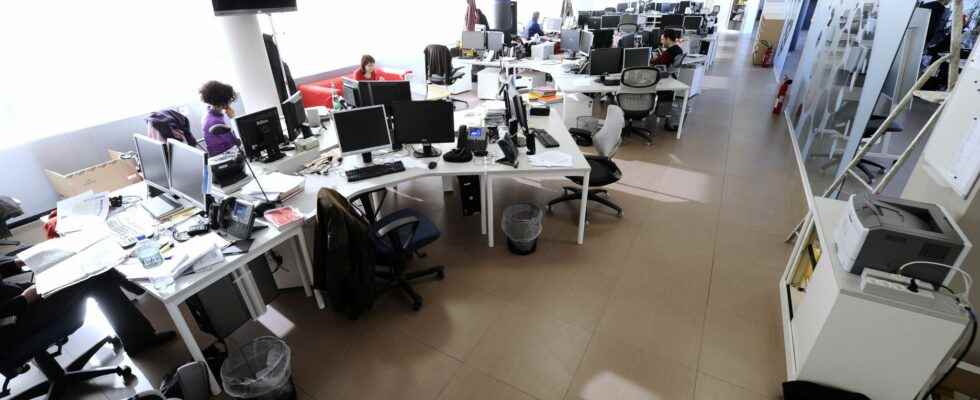After long months marked by heat waves and temperatures above average for the season, the onset of cold weather is not always easy to live with for bodies not yet accustomed to such low temperatures. Due to slippery phenomena, the prefecture of the Ile-de-France region has asked all its inhabitants to limit their movements this Wednesday, December 14 and to favor teleworking.
What arrange some employees already tempted to stay warm at home for several days. The energy sobriety plan announced on October 6 in France now limits heating to 19 degrees in offices, in order to avoid shortages of gas or electricity.
In offices, this maximum temperature must also be lowered to 16 degrees in storage areas or at night, and to 8 degrees when the building is closed for more than 48 hours, except in nurseries or health establishments.
No temperature below which it is forbidden to work
The National Research and Safety Institute for the Prevention of Workplace Accidents and Occupational Diseases (INRS) indicates that “an environment is considered cold for an air temperature below 18 degrees, the temperature at which triggers heat loss”.
However, this is an indication for the employer and not a mandatory temperature to be respected. Since March 2006, the NF X35-203/ISO 7730 standard relating to thermal comfort has specified the recommended temperatures for working in good conditions and recommends temperature scales to be respected: between 20 and 22 degrees in offices.
“There is no temperature in French law below which it is forbidden to work”, recalls near West France Valérie Gilbert, lawyer in labor law. The Labor Code specifies that the premises assigned to work must be heated during the cold season, without giving any indication of minimum temperature, as the LégiSocial portal reminds us.
“On the other hand, it is accepted and customary that below 18 or 19 degrees, it becomes problematic. It is the general management which decides on the temperature in the offices”, indicates to BFMTV Valérie Duez-Ruff, labor lawyer.
Is the right of withdrawal possible?
Can we exercise our right of withdrawal in the event of a temperature deemed too low? Yes, but on one condition. “When the temperature drops below 5 degrees, there is an immediate risk for the employee”, specifies the INRS. It is only in this specific case that the employee can exercise his right of withdrawal in order to protect himself against the dangers linked to this exposure to the cold.
Nevertheless, relates the lawyer Valérie Duez-Ruff, “case law has given reason to an employee who had exercised his right of withdrawal because it was 14-15 degrees in offices. The Labor Court validated his right withdrawal […] the employee had the right not to work to preserve his health and safety at work.”
The employer is indeed required to take the necessary measures to ensure the safety and protect the physical and mental health of the workers, under article L. 4121-1 of the Labor Code. He must take into account the risks associated with the cold and take, after the opinion of occupational medicine and the CSE, “all the necessary measures to ensure the protection of his workers against the cold and bad weather” according to the item. R. 4223-15 of the Labor Code.
As reminded the women’s journal, if the employer does not comply with these provisions, the employee can alert the labor inspectorate, the CSE or the union delegate who will check that the employer is respecting his obligations, or even request a visit from the occupational physician. The employee may, if he considers that he is in a situation that presents a serious and imminent danger to his life or health, immediately alert the employer and cease his activity. The employer cannot then ask him to resume his activity as long as this danger persists, according to article L. 4131-1 of the Labor Code.
Employees required to work outdoors must be equipped by their employer. The boss can therefore be held liable if he has not informed the employees and limited the risk factors by equipping and arranging the working conditions at particularly low temperatures.
According to the INRS, these adapted prevention measures making it possible to reduce the number of accidents and disorders related to working in the cold are, for example, the different organization of working time, the supply of adapted work equipment, the heated break rooms or the provision of personal protective equipment against the cold.
